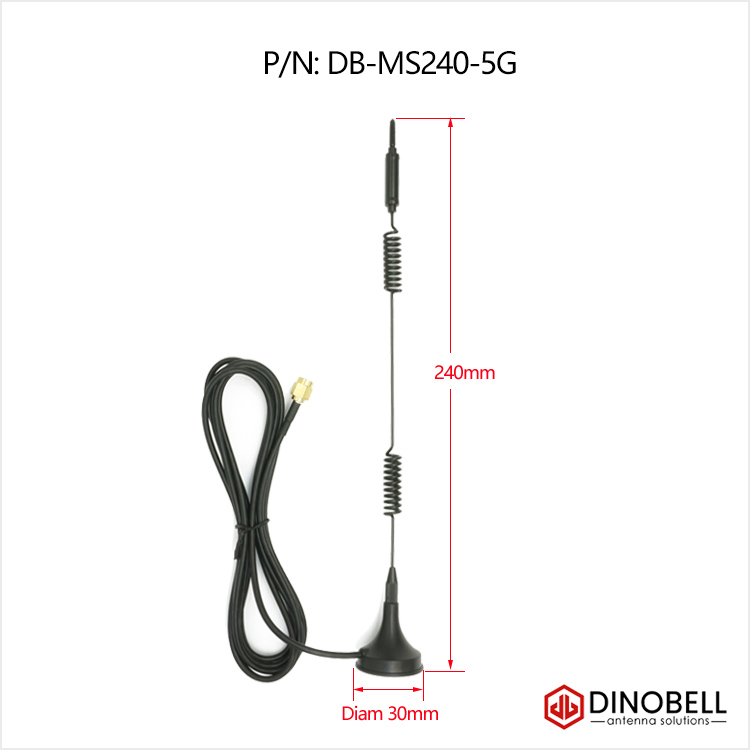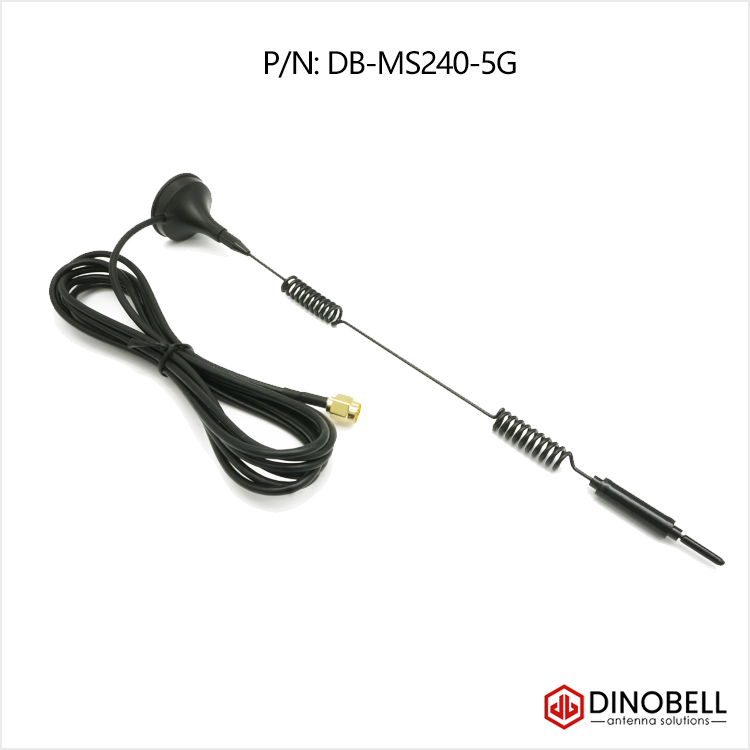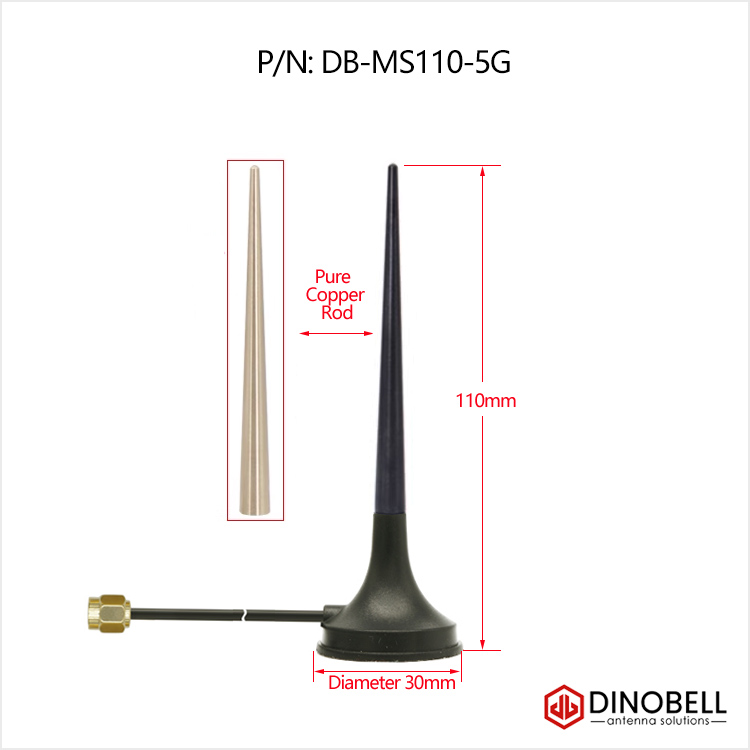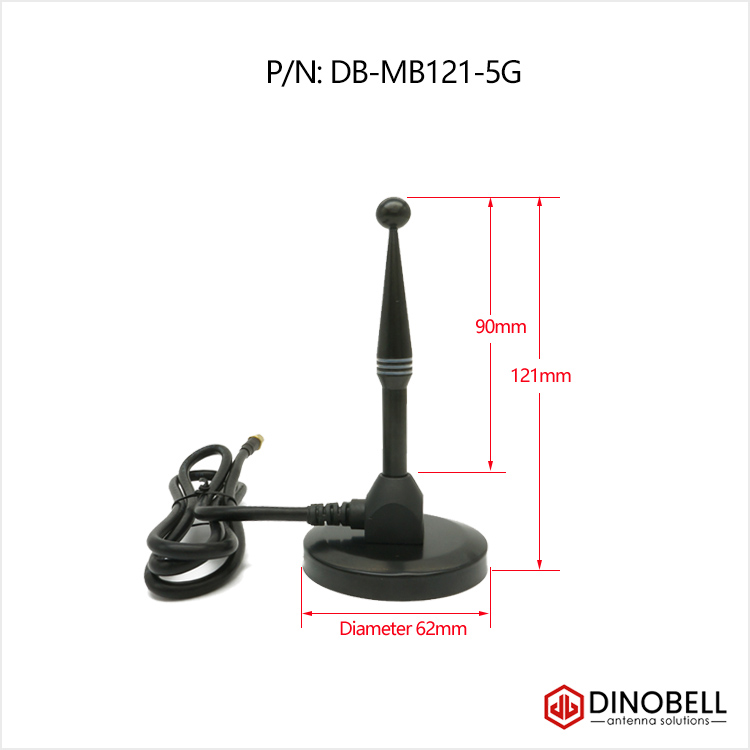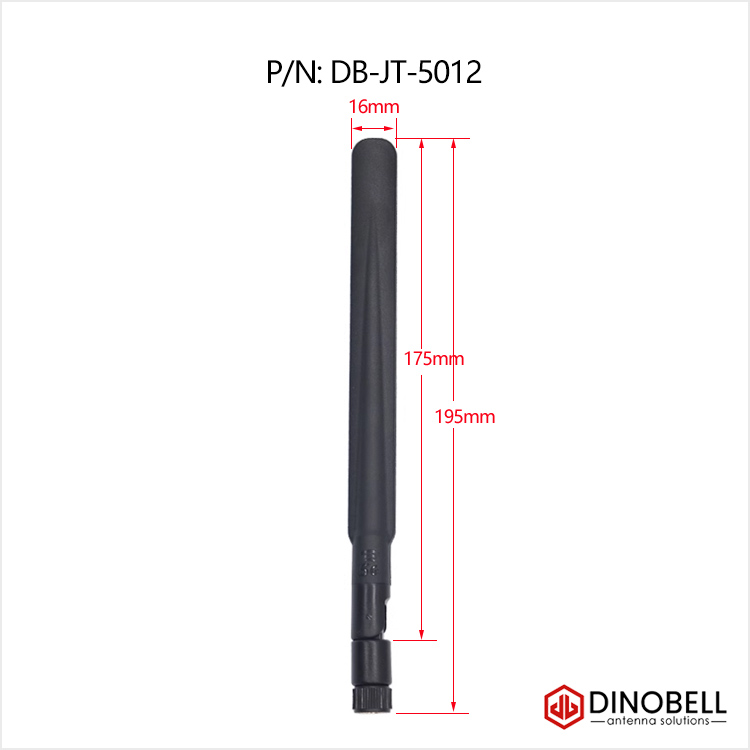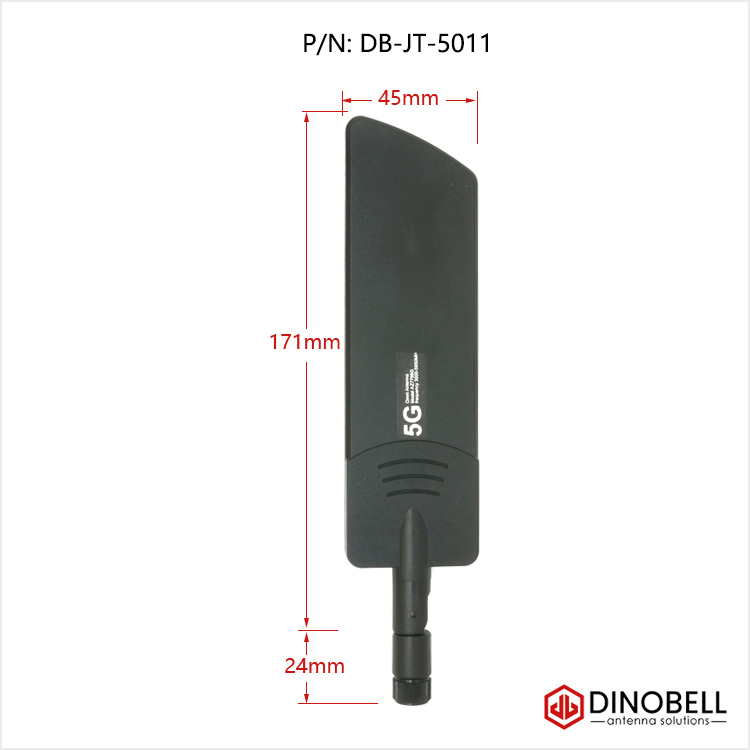Type: 5G Antenna, 5G Cellular Antenna, Magnetic base antenna
| Part Number: |
DB-MS220-5G |
| Freq Range: |
700-960/1710-2700/3000-5000MHz |
| Center Freq: |
– |
| Gain: |
3-5 dBi |
| VSWR: |
<=2.0 |
| Impedance: |
50 Ohm |
| Polarization: |
Vertical |
| Radiation Pattern: |
Omni-Directional |
| Max. Input Power: |
25 W |
| Antenna Height: |
220mm |
| Base Diameter: |
30mm |
| Mounting Method: |
Magnetic |
| Coaxial Cable Type: |
RG174/ RG316 optional |
| Cable Length : |
1 meter, 3 meter, 5 meter, 10 meter optional |
| Connector Type: |
SMA-male, RP-SMA-male, MCX ,MMCX , N, M, F optional |
Emerging 5G networks feature lower latency, higher capacity, and increased bandwidth compared to 4G. These network improvements will have far-reaching impacts on how people live, work, and play all over the world.
Speed Upgrades
Low Latency
Enhanced Capacity
Increased Bandwidth
Speed Upgrades
Each wireless network generation has reflected a significant increase in speed, and the benefits of 5G—the fifth generation of cellular network technology—will push far beyond 4G LTE.
Predicted speeds of up to 10 Gbps represent up to a 100x increase compared to 4G.1 In practical terms, 4G vs. 5G speed enhancements will mean exciting possibilities for consumers. 5G Cellular antenna.Transferring a high-resolution movie at peak download speeds will go from taking seven minutes to just six seconds.2 That time savings could mean being able to grab that new hit film before the flight attendant asks you to put your phone in airplane mode.
After carriers roll out full 5G features, consumers and businesses may begin to consider 5G networks a strong alternative for fast broadband connections.

